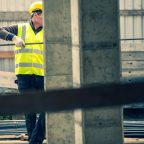
10 Interesting Facts about Commercial Elevators You Didn't Know
Elevators are a part of our daily lives, but how frequently do we give them enough consideration? The history, mechanics, and function of these contemporary engineering wonders in urban mobility are sometimes disregarded because of how ingrained they are in our daily lives. Get ready to be amazed by the fascinating intricacies that go into these commonplace marvels, whether it's a moving walk or a commercial lift.
Commercial elevators are an integral element of today's infrastructure, but here are ten shocking facts about them that will make you rethink your opinion.
1. A Prolonged Background of Vertical Transportation
Despite its sleek and contemporary appearance, Al Arabia Elevators have a long and rich history that dates back centuries. In 236 BC, Archimedes is said to have created the first mechanical design for what would later be known as "elevators." The first known "elevators" were basically just simple platforms that could be moved by people or animals. The remarkable consistency of the concept of vertical mobility throughout centuries of technical improvement is a testament to the innovation's crucial role in urban life.
2. Constructed for Longevity
Elevators for commercial use are built to endure. These machines can move thousands of people every day without breaking down and usually last between twenty and thirty years. As long as they are well-maintained, they will keep on reliably assisting people in navigating tall structures.
3. Smart Technology Has Replaced Traditional Methods
Modern elevators are smart devices that aid in the effective management of building traffic, serving as much more than just movers. These days, elevators may optimize their courses and cut down on wait times by evaluating passenger requests. To make things even faster, some systems even allow riders to choose their destination ahead of time, so the elevator knows just which one to take them there.
4. Beyond Simple Elevations
A common misconception is that elevators are only used for moving up and down stairs. Modern, high-tech elevators can go not just vertically but also horizontally and diagonally in certain ultra-modern structures. This technology facilitates the navigation of large spaces, allowing for the easy and efficient movement between different parts of a building.
5. Misconceptions About Free-Fall Elevators
The horrific free-falls of elevators caused by snapped cables that we see in movies are obviously not going to happen in real life. Elisha Otis invented the safety brakes and modern elevators have many backup cables. In the case of a malfunction, these safety systems will activate instantly, keeping passengers secure throughout the journey.
6. Eco-Friendly and Energy-Efficient
Over time, all kinds of elevators including Al Arabia Elevators for cars have improved their energy efficiency. Regenerative drives are used by some newer versions to transform the energy generated when the lift descends into useful power. The building's system then receives this energy and uses it again, lowering the building's total energy usage. What if you could go up while also helping to reduce energy consumption?
7. The Unspoken Guidelines for Properly Utilizing Elevators
How often have you observed that when you enter an elevator, you immediately form a queue? In most cases, the first person to enter will go to the rear, the second will occupy the far side, and the third will do the same. As an intriguing social phenomenon in public places, it is often the individual nearest to the control panel who punches the buttons. I find it incredible that we adhere to these unofficial "rules" without recognizing it!
8. You Can Find An Elevator Almost Anywhere
Contrary to popular belief, commercial elevators are actually rather prevalent. With more than a million units in service, elevators in the United States alone carry out over 18 billion trips per year! In many places like office buildings, malls, hospitals, and residential complexes, we take these quiet workhorses for granted as they carry us from floor to floor.
9. The Impact of Elevators on Building Architecture
Without elevators, modern skyscrapers would be impossible to construct. The elevator was a game-changer for building design since it allowed for the construction of taller, more useful structures. Buildings can now handle more foot traffic thanks to modern technology like double-deck elevators, which enable cities to rise vertically while keeping transportation within them efficient.
10. Prioritizing Safety at All Times
Elevators are designed with strict safety precautions to guarantee the protection of passengers. Similarly, commercial elevators company in Dubai follow stringent safety protocols, including regular inspections and backup safety systems. Many elevators won't start moving unless the doors are locked, and sensors make sure people aren't hurt when doors close.
As a Final Remark
Commercial elevators are full of interesting history, ingenious design, and cutting-edge technology, despite their seeming simplicity at first look. The next time you ride in one, stop and think about all the clever engineering that went into making it a need in today's world. Elevators have been an integral part of city life since their inception and, with the help of top elevator companies in Dubai, have evolved into a universal symbol of accessibility and unity in our fast-paced metropolises.

















